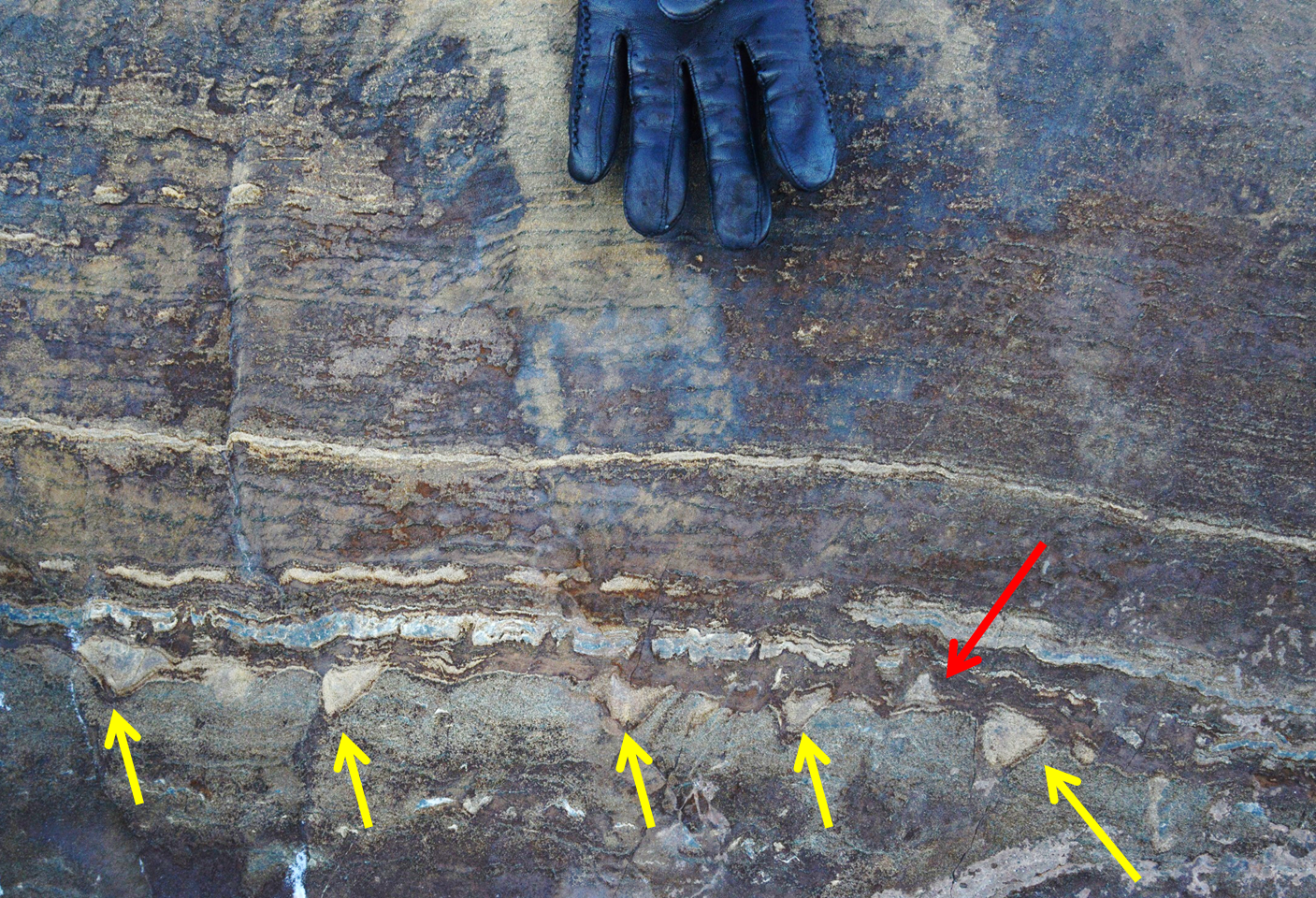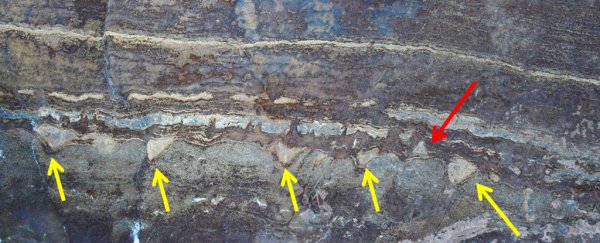A contender for the world's oldest fossil may be out of the running, as recent evidence suggests it could simply be a rock and not a sign of biological life after all.
Holding the record for Earth's earliest-known remnant of life is about as tough as keeping the crown in Game of Thrones. It seems like every few years, the victor is being usurped by some more ancient and impressive find.
For a while there, the oldest known evidence for life was a 3.48 billion-year-old fossil stromatolite - a layered sediment found in shallow waters and formed by mats of single-celled microbes.
This particular stromatolite was found in the Pilbara region of Western Australia in 2011, and for several years it wore the crown for the oldest-known fossil in the world.
It wasn't long, however, before a formidable competitor was found.
In 2016, researchers described the ancient marks of 3.7 billion-year-old organisms found in southwest Greenland.
At the time, the team argued that the morphology, chemistry, mineralogy and layering of these conical rock structures - about one to four centimetres apiece - were evidence of stromatolites.
The extraordinary discovery made headlines worldwide. If the dating proved correct, the fossil record would be pushed back by no less than 200 million years to the very start of Earth's rock record - an incredible change, given Earth itself is thought to be only 4.5 billion-years-old.
Now, however, a new team of researchers is raising doubts about those Greenland fossils. They claim that the previously published results do not support the conclusion about the structures being the remnants of ancient organisms.
Instead, they might just be, well, really old rocks.
Analysing the three-dimensional shape, orientation and chemical composition of the site, the researchers have shown that these so-called 'stromatolites' are more likely the result of geological forces.
Not only were the fossils lacking internal layers typical of stromatolites, they were also missing key chemical signatures expected from microbial activity.
Even more telling, the shape of the stromatolites appeared just a little too perfect. When put under three dimensional analysis, they seemed to line up in a straight ridge. They were not conical at all.
"They're not ice cream cones. They're Toblerone bars," lead author Abigail Allwood, a NASA astrobiologist at the Jet Propulsion Laboratory in Pasadena, California, told The Washington Post.
 (Nature/California Institute of Technology)
(Nature/California Institute of Technology)
In light of the recent findings, the researchers claim it is far more plausible that the ridges are the result of marine sediments stretching and folding over long periods of time. This, they argue, is what tricked us into thinking they were organisms.
"We agree that the host rock protolith formed in a marine environment; however, there is no evidence for shallow water depth, and there is no unambiguous evidence that carbonate was part of the primary sedimentary assemblage," the authors conclude.
Greenland is home to Earth's oldest rocks, which means this region has had billions of years to bend, stretch and heat its rock formations into interesting shapes and compositions.
The problem is, this makes it far more difficult for experts to hunt for the original texture and composition, which have been largely obliterated by the sum of this change.
In other words, this particular field of study is shrouded in controversy, and the debate over these Greenland rocks or fossils is far from over.
The lead author of the 2016 paper, Allen Nutman, has already told The Washington Post that he stands by his original interpretation, arguing that Allwood chose the wrong site to test.
"This is a classic comparing apples and oranges scenario, leading to the inevitable outcome that ours and their observations do not exactly match," Nutman wrote to the newspaper.
Speaking to The Atlantic, however, Allwood stuck to her guns. She said that the sample they used was just a metre from Nutman's site.
"The biological input to ancient stromatolites is a long-standing controversy," says Mark van Zuilen, an expert in geomicrobiology, who was not involved in the study.
"Future research might lead to a firm understanding of the primary versus secondary processes that shaped this rock."
This study has been published in Nature.
